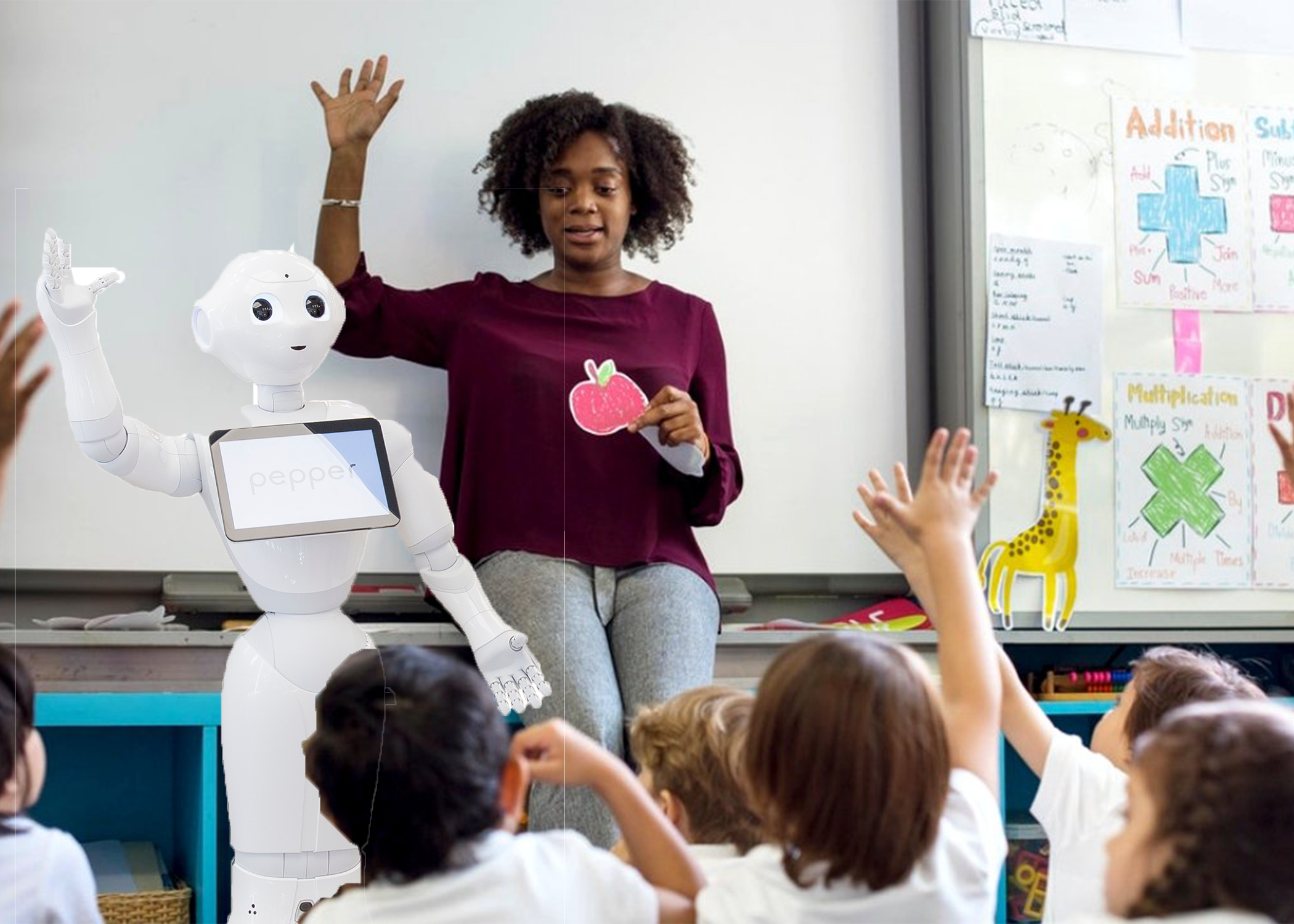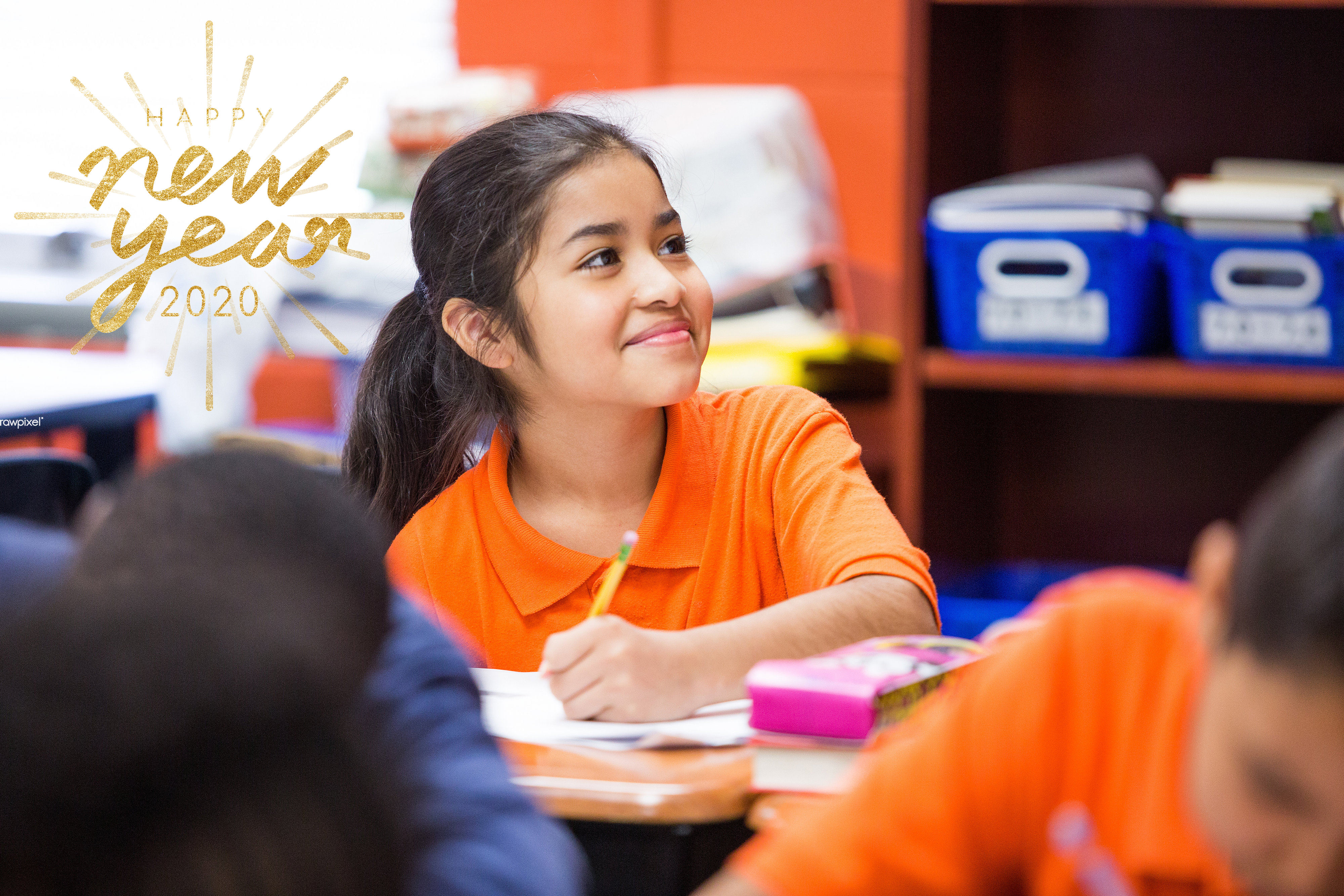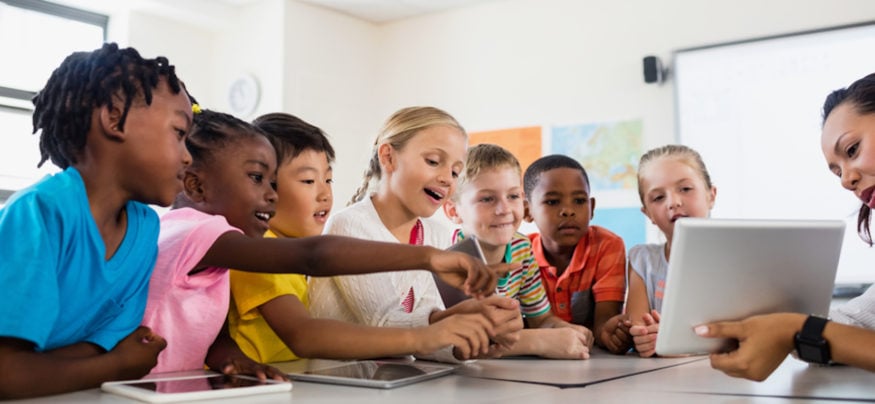Investing in Girls’ STEM Education

New technologies are dramatically transforming work and the global economy every day. This new age of automation creates new opportunities for businesses and governments, but due to gender barriers as old as time, the next generation of girls is at risk of being left behind. Science, technology, engineering, and mathematics (STEM) careers hold tremendous promise for millions of women—but only if new policies tackle access and education problems first.
- 0 Comments
- Jan 9, 2020 10:10:00 AM
- Posted by Natalia Galvis
- Topics: Robotics, EdTech, STEM, Technology, WomeninSTEM, Edchat, girlsinSTEM
What Does a Future Ready Educator Look Like?

As new technology emerges and most work is done online, it is more important than ever to teach students how to adapt in the ever-changing digital world they live. This is where “Future Ready” schools and “Future Ready” educators become essential.
The Alliance for Excellent Education describes, “Future Ready is a free, bold new effort to maximize digital learning opportunities and help school districts move quickly toward preparing students for success in college, a career, and citizenship.” As school districts invest in developing Future Ready schools, educators must also make sure they are preparing to embrace digital learning to be “future ready” educators. What does this look like?
- 1 Comments
- Jan 8, 2020 10:00:00 AM
- Posted by Natalia Galvis
- Topics: Robotics, EdTech, STEM, teachers, Technology, Edchat, Digital Technology, Educators
Coding, Robotics and the Jobs of the Future

Since as early as the 1800’s, fears of robots taking over human jobs has been a reality. As we enter the true age of robotics, those concerns are resurfacing, and educators are unsure about what jobs their students will be competing for. For example, IT jobs will grow by 22% through 2020 and jobs in STEM are said to see similar growth. Educators are expected to equip their students with skills that will translate into careers and yet they have no idea what these skills should be. While timeless skills such as critical thinking, languages and mathematics aid in every career they do not provide the specialized skills that “jobs of the future” may require. So, what are the jobs of the future and how can be best prepare students for them?
- 0 Comments
- Jan 7, 2020 10:00:00 AM
- Posted by Natalia Galvis
- Topics: Robotics, EdTech, STEM, Artificial Intelligence, Technology, Edchat, AI, Digital Technology
5 Big Ed-Tech Problems to Solve in 2020

Teaching Artificial Intelligence. Moving beyond coding when talking about computer science. Training teachers to use technology without having to get certified by a big company.
Those are among the five education technology issues that Ricard Culatta, the CEO of the International Society for Technology in Education, thinks educators should watch in the 2020 school year.
- 0 Comments
- Jan 6, 2020 12:01:09 PM
- Posted by Natalia Galvis
- Topics: EdTech, STEM, Technology, Edchat, Digital Technology
3 Reasons Why Schools Must Encourage Technology Use

Schools and technology use have been inseparable for decades. How we use technology is changing.
The 21st century requires skills far different than those of the last century. Today’s workforce incorporates technology in nearly every aspect of their jobs and lives. Digital computing not only assists in task completion but in many cases, it has taken over repetitious duties. Technology also allows people to conduct professional and personal business on the go. We work, bank, socialize, learn, and entertain ourselves online.
Our students are growing up in a digitally connected world. They’ve never known anything else. As of June 2019, an estimated 7.7 billion people accessed the internet for labor and leisure purposes. That number is expected to grow as internet penetration expands throughout the world.
To prepare students for living and working in a quickly-evolving world that centers around technology, we must provide differentiated support, teach collaboration skills, and make learning fun. Technology makes those goals possible.
- 0 Comments
- Jan 3, 2020 10:30:00 AM
- Posted by Natalia Galvis
- Topics: EdTech, STEM, Technology, Edchat, Digital Technology
Integrating STEM for the New Year!
More and more high school graduates are choosing to study STEM-related fields after graduating, thanks to the wealth of career opportunities that require those skills. As such, it’s vital for educators to understand how to integrate STEM into the classroom. But while most teachers are aware of the importance of STEM, strategically integrating it into lesson planning, especially in less-obvious courses, can leave them scratching their heads.
To understand how to communicate the importance of STEM skills to students, it’s essential to first address the reality of the field.

- 0 Comments
- Jan 2, 2020 10:00:00 AM
- Posted by Natalia Galvis
- Topics: EdTech, STEM, Technology, Edchat
AI’s New Year’s Resolutions for Education
Everywhere you look in the weeks leading up to and following New Year’s Eve, people are making predictions for the year to come.

One of our biggest obsessions is how artificial intelligence is transforming the way we learn and develop critical professional skills. So, naturally, we’ve been eagerly poring through predictions from the ed-tech world, about how artificial intelligence and similar innovations will become even more of a game changer for higher education in the coming year.
- 0 Comments
- Dec 31, 2019 10:00:00 AM
- Posted by Natalia Galvis
- Topics: EdTech, STEM, Technology, Edchat
Developing Critical Thinking through education technology

Critical thinking is not a school subject, but if taught properly, it will help students in their future endeavours whether they intend to continue to higher education or to enter the workforce immediately after K-12. It is not a single skill, either, but rather a set of different skills working together to allow students to process information, make evaluations, solve problems, and come up with innovative ideas rather than relying without question on what they have been told. In short, critical thinking will prove useful to students not just at school, but in life in general.
Just like it has transformed the teaching of traditional subjects, EdTech can leave a mark on the development of critical thinking too: let’s see how.
- 0 Comments
- Dec 30, 2019 10:00:00 AM
- Posted by Natalia Galvis
- Topics: EdTech, STEM, Technology, Edchat, Digital Technology
Technology Collaboration Results in Improved Success

The key to any success lies in collaboration. With vision and persistence, people can set goals and inspire others to join in pursuit of them.
Katie Bouman recently shook up the world of physics. She developed the algorithm that would enable them to triangulate image points in a collaborative effort to take a picture of a black hole. The Event Horizon Telescope was not launched in a silo, and Bouman didn’t work alone. Bouman led the competent teams stationed around the world in capturing the first image of a black hole. Her need to collaborate didn’t lessen her achievement; it made it even more notable.
The black hole imaging project is not the first collaborative effort that integrated technology. The Human Genome Project and the Millennium Seed Bank Partnership are also global efforts to better understand our environment and improve the quality of life for everyone. Successful technology integration depends on collaboration.
The same is true for edtech.
- 0 Comments
- Dec 27, 2019 10:30:00 AM
- Posted by Natalia Galvis
- Topics: EdTech, Technology, Edchat, Digital Technology
4 Keys to Finding and Using Technology in Early Elementary Classrooms
Finding quality technology resources to incorporate into the classroom can be challenging for any teacher, but it may be a particularly tall order for teachers of younger students. As a kindergarten teacher, I’m all too aware of the heightened concerns about screen time and what is and is not age-appropriate for our littlest pupils. Here are a few suggestions to help bring tech tools that are age-appropriate and educationally relevant into the classroom without spending a ton of time hunting them down.

- 0 Comments
- Dec 24, 2019 11:00:00 AM
- Posted by Natalia Galvis
- Topics: EdTech, STEM, Technology, STEMchat, Edchat, Digital Technology
Relevant Posts
Popular Posts
Subscribe to Email Updates
-
I Want To Learn MoreADDITIONAL INFORMATION


